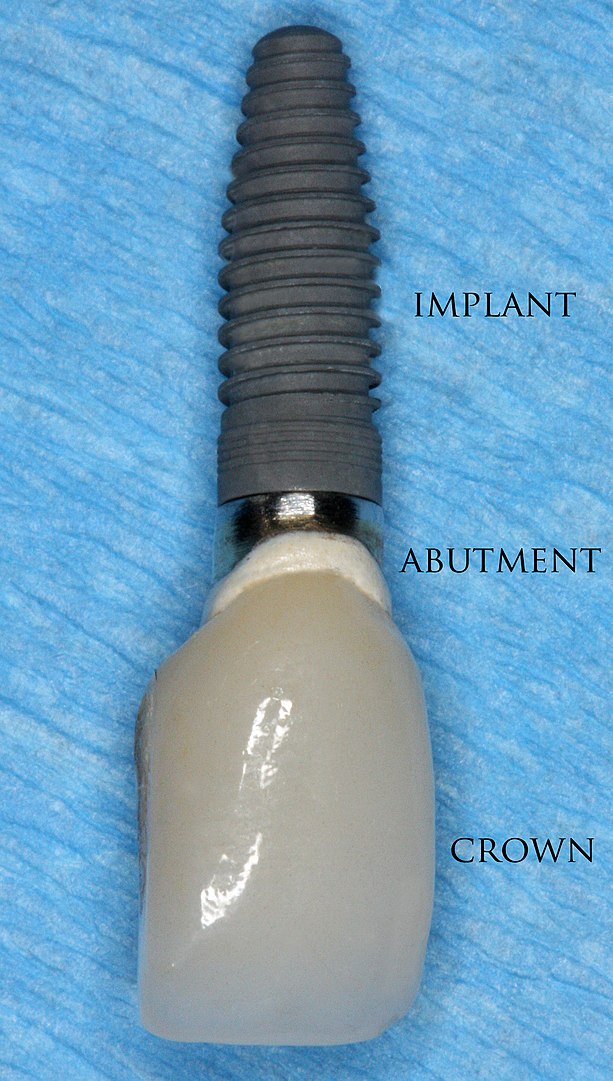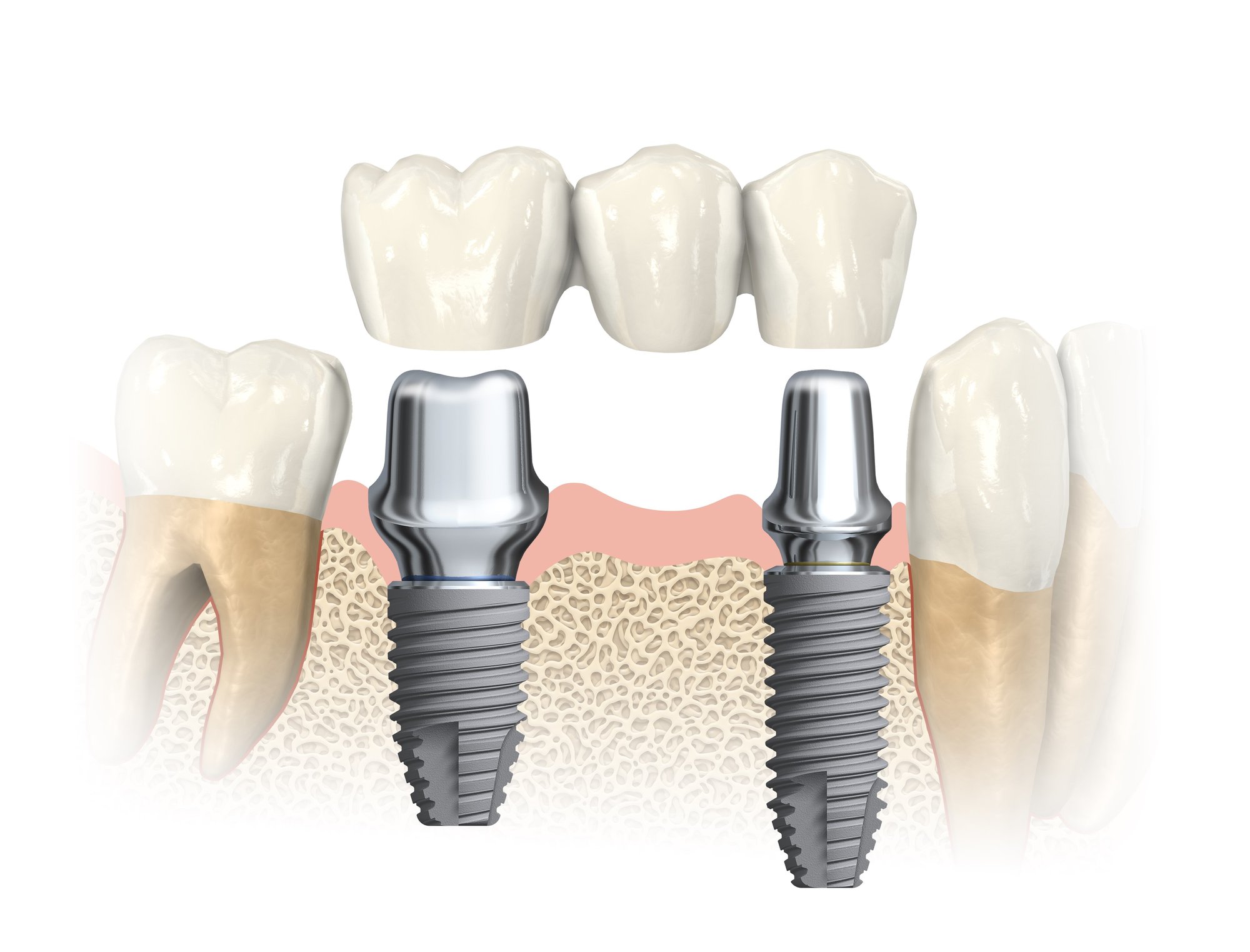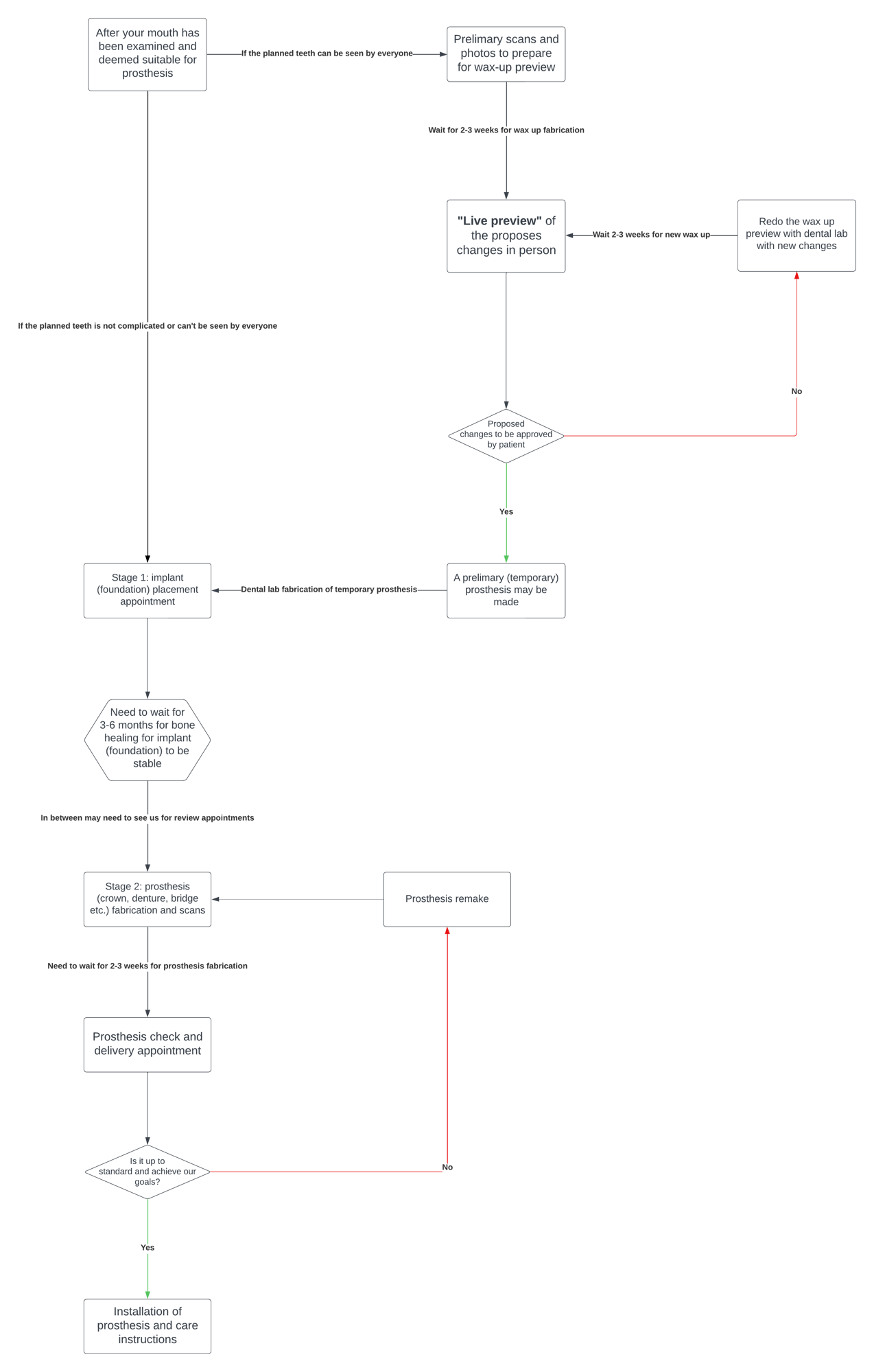Dental Implants
What are dental implants?
-
Dental implants serve as artificial tooth roots and are placed within the jawbone.
-
They act as anchors for various dental restorations, including crowns, bridges, or dentures.
-
The implant structure typically consists of three components: the implant, the abutment, and the crown.
-
The term “dental implants” often refers to the combination of implant + abutment + crown.
-
These implants are commonly used to replace missing teeth and maintain the jawbone’s structure.
-
For those considering dental implants, factors like healthy gum tissue, sufficient bone density, and good oral hygiene practices are essential. Regular hygiene routines, dental check-ups, and a balanced diet contribute to their longevity.


How is it done?
Here is a summary flow chart of how implants are placed:

For those who like to read text instead:
-
We need to examine your mouth and greenlight its suitability for dental implants.
-
If the planned teeth will be seen by everyone, will take additional photos and 3D scans to make a wax up.
-
You’ll be able to see a live preview of it in person, and if you’re okay with it will go on to the next step.
-
If your planned teeth are not complicated or won’t be seen by everyone, we’ll jump straight to the next step.
-
-
Stage 1: implant placement (foundation) appointment
-
Wait for 3-6 months for it to become stable
-
Stage 2: prosthesis fabrication and scans
-
If it is up to standard, installation will be done on the same appointment.
What are some of the alternatives?
For those who like read about pros and cons of dental implants, plus alternative treatments:
Dental implants
+ Fixed to your existing bone.
+ The closest thing to +having your original tooth.
+ Long term lifespan
+ High success rate
+ Prevents and/or reduces bone resorption.
- Cost
- Involvement of multiple dentists and dental specialists
- Time: takes weeks and months to plan and execute - like building a house from scratch!
Conventional bridge
+ Fixed to the adjacent teeth.
+ A very good alternative to dental implants
- The need to prepare and drill the adjacent teeth (big disadvantage if the tooth had never had a filling)
- Not suitable if you have multiple large gaps to fill
- Will not prevent bone resorption (can result from the tooth being replaced under the bridge to have large gaps and food trap).
Maryland/Resin bonded bridge
Note: Option limited to upper arch only!
+ Relative lower cost compared to dental implants.
+ Medium term solution
+ Fixed to the adjacent tooth after conservative preparation.
- Limited to the upper front tooth only - Will not prevent bone resorption - There will be a chance of debonding over time (i.e. the bridge unit comes off) but on the plus side it can be rebonded easily
Dentures
+ Relatively quick to make.
+ Conservative preparation of the existing tooth in order to make the denture stay in.
+ Good, economical option to fill in multiple gaps in your teeth.
+ Very adaptable to future changes (i.e. if you're upgrading to an implant)
- Will not prevent bone resorption
- Because of this, the denture will need to be serviced at least once every 6 months in order to allow the base of the denture to match the change in the bone height.
- Not fixed in the mouth
- Needs to be removed every night
- Good oral hygiene is a must, otherwise the denture can cause the other tooth that is holding it to loosen and exacerbate gum diseases.
- Potential poor tolerance due to people who have oversensitive gag-reflexes
- May reduce your taste sensations - May reduce your ability to bite on foods compared to having natural teeth.
Do nothing (i.e. leave a gap)
+ Viable choice due to the costs of dental treatment
- The alveolar bone where the tooth has been taken will slowly resorb over time once the tooth is lost.
- Because of the above problem, it can make future replacement of your tooth more complex (adding to the cost of treatment)
- Potential aesthetic concern.
- Potential for drifting, rotation and over-eruption of adjacent teeth into the gap over time
- Possible gum problems in the future due to the above scenario
So what’s the best for me?
Each person have their own unique needs so it is difficult to tell. The best way to know what you need is to contact us we'll sit down with you to go through the best option with you.
